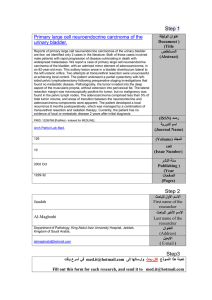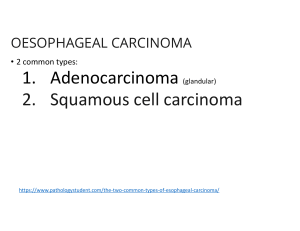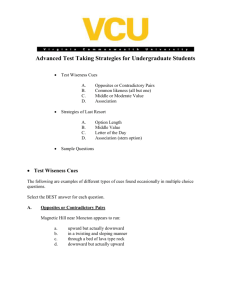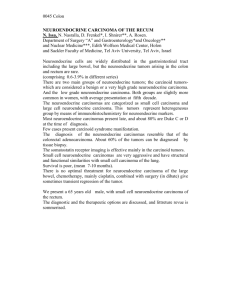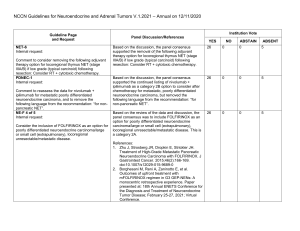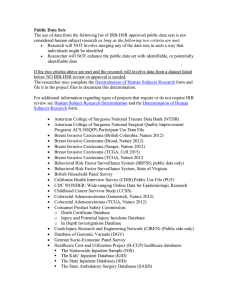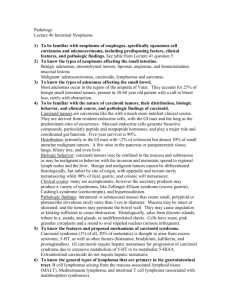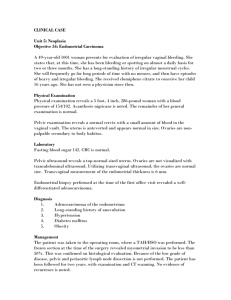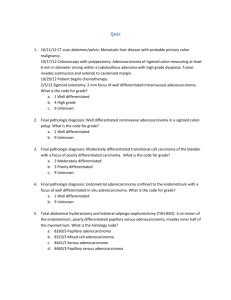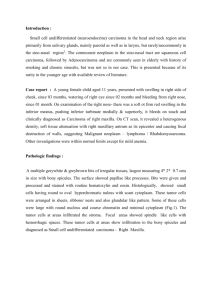doc
advertisement
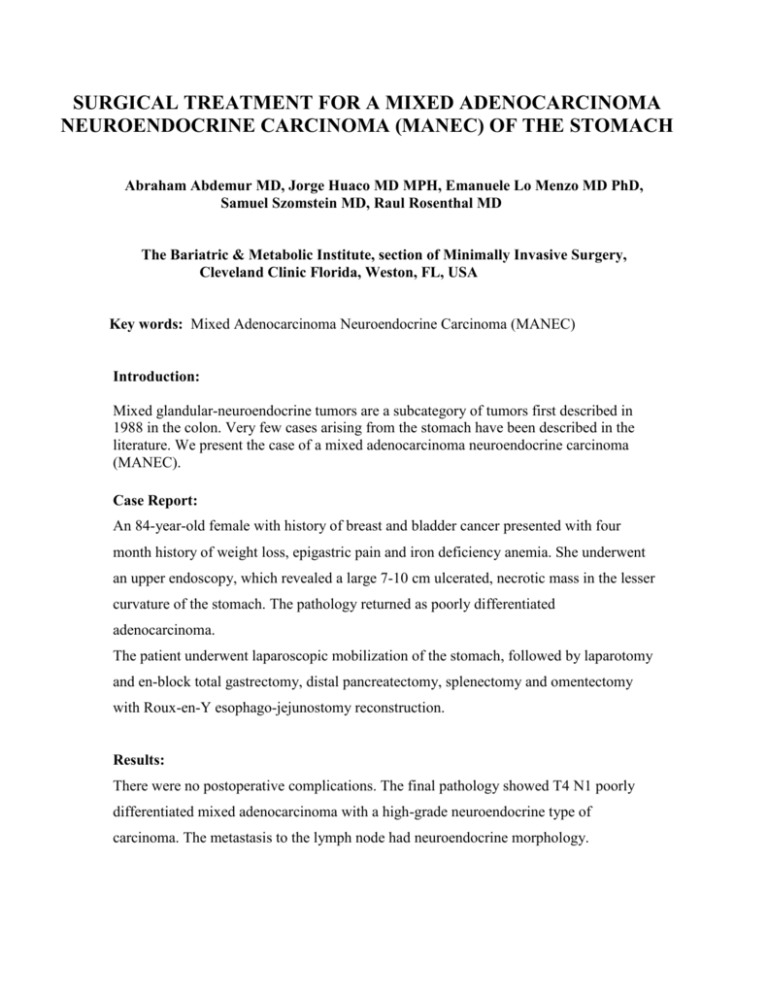
SURGICAL TREATMENT FOR A MIXED ADENOCARCINOMA NEUROENDOCRINE CARCINOMA (MANEC) OF THE STOMACH Abraham Abdemur MD, Jorge Huaco MD MPH, Emanuele Lo Menzo MD PhD, Samuel Szomstein MD, Raul Rosenthal MD The Bariatric & Metabolic Institute, section of Minimally Invasive Surgery, Cleveland Clinic Florida, Weston, FL, USA Key words: Mixed Adenocarcinoma Neuroendocrine Carcinoma (MANEC) Introduction: Mixed glandular-neuroendocrine tumors are a subcategory of tumors first described in 1988 in the colon. Very few cases arising from the stomach have been described in the literature. We present the case of a mixed adenocarcinoma neuroendocrine carcinoma (MANEC). Case Report: An 84-year-old female with history of breast and bladder cancer presented with four month history of weight loss, epigastric pain and iron deficiency anemia. She underwent an upper endoscopy, which revealed a large 7-10 cm ulcerated, necrotic mass in the lesser curvature of the stomach. The pathology returned as poorly differentiated adenocarcinoma. The patient underwent laparoscopic mobilization of the stomach, followed by laparotomy and en-block total gastrectomy, distal pancreatectomy, splenectomy and omentectomy with Roux-en-Y esophago-jejunostomy reconstruction. Results: There were no postoperative complications. The final pathology showed T4 N1 poorly differentiated mixed adenocarcinoma with a high-grade neuroendocrine type of carcinoma. The metastasis to the lymph node had neuroendocrine morphology. Conclusion: Mixed glandular-neuroendocrine tumors of the gastrointestinal tract are rare and only few arise from the stomach. Complete surgical excision remains the standard of care. Whether the long-term prognosis of a MANEC tumor is different from that of gastric adenocarcinoma remains to be determined.
